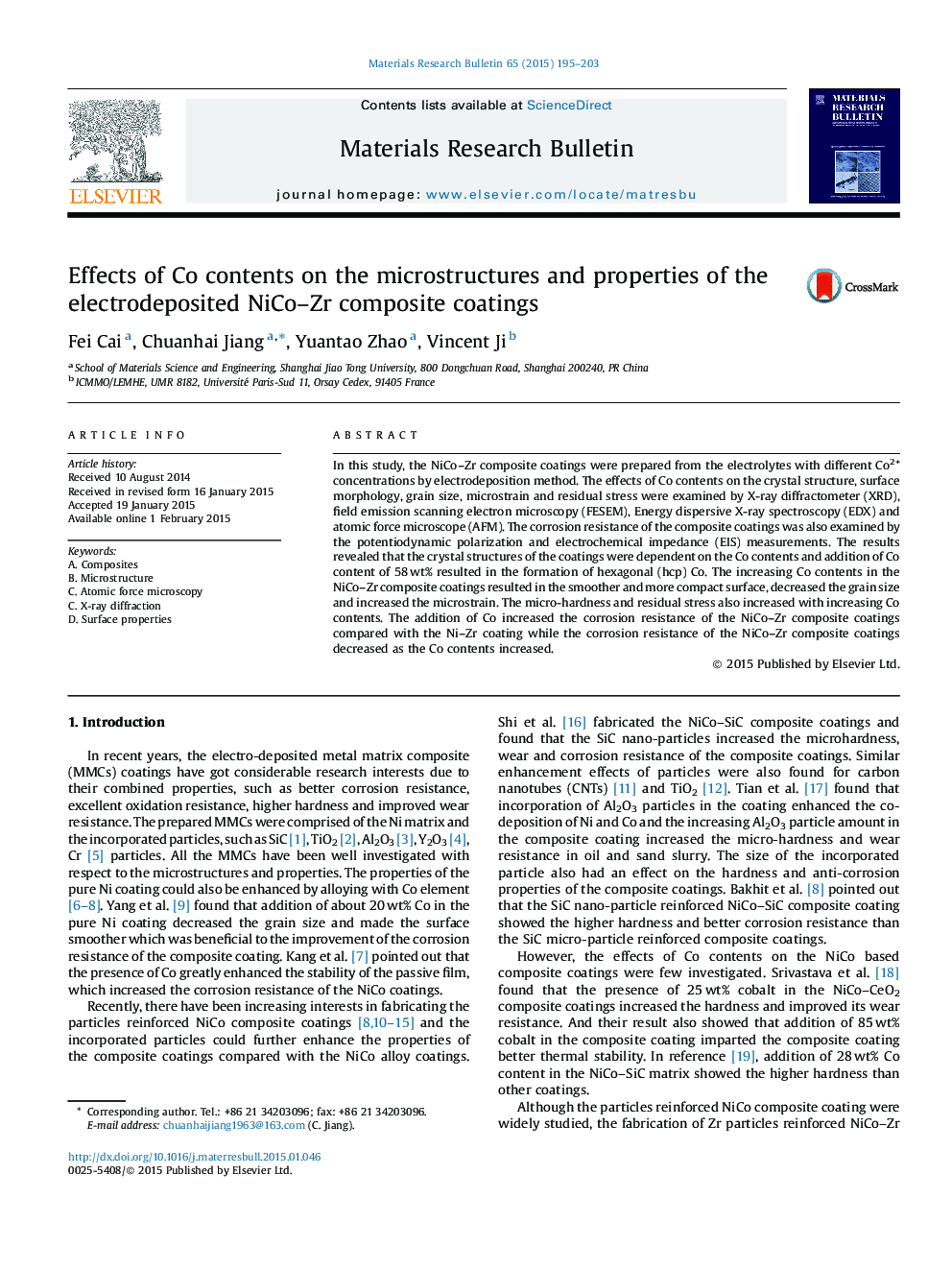| Article ID | Journal | Published Year | Pages | File Type |
|---|---|---|---|---|
| 1487690 | Materials Research Bulletin | 2015 | 9 Pages |
•The novel NiCo–Zr coatings were prepared by electro-deposition.•Surface morphology, crystal structure, grain size and microstrain were examined.•Texture, residual stress and corrosion resistance were investigated.•Addition of Co increased the hardness and corrosion resistance of the coatings.
In this study, the NiCo–Zr composite coatings were prepared from the electrolytes with different Co2+ concentrations by electrodeposition method. The effects of Co contents on the crystal structure, surface morphology, grain size, microstrain and residual stress were examined by X-ray diffractometer (XRD), field emission scanning electron microscopy (FESEM), Energy dispersive X-ray spectroscopy (EDX) and atomic force microscope (AFM). The corrosion resistance of the composite coatings was also examined by the potentiodynamic polarization and electrochemical impedance (EIS) measurements. The results revealed that the crystal structures of the coatings were dependent on the Co contents and addition of Co content of 58 wt% resulted in the formation of hexagonal (hcp) Co. The increasing Co contents in the NiCo–Zr composite coatings resulted in the smoother and more compact surface, decreased the grain size and increased the microstrain. The micro-hardness and residual stress also increased with increasing Co contents. The addition of Co increased the corrosion resistance of the NiCo–Zr composite coatings compared with the Ni–Zr coating while the corrosion resistance of the NiCo–Zr composite coatings decreased as the Co contents increased.
Graphical abstractFigure optionsDownload full-size imageDownload as PowerPoint slide
